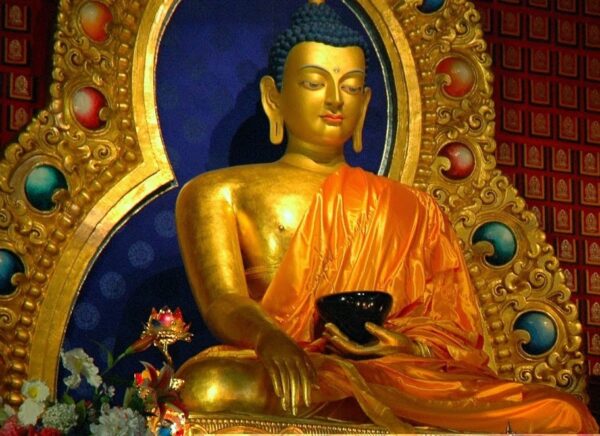Advaita refers to a state of non-duality of the self and God. It transcends all thoughts and dualities. All conceptions involved are ultimately misconceptions. As a practice, it’s all about the removal of misconceptions regarding our true selves. Negating any false identification between the external world and the body.
It refers to the idea that Brahman and he alone is ultimately real, that the phenomenal transient world is all but an illusion of Brahman, and the true self. This doesn’t only apply to the world around us. It applies to ourselves.
According to these teachings, our individual personalities don’t exist themselves. They form part of a mass of thoughts, memories, and sensations, all of which are not true.
Through teachings on non-duality, meditation can help merge our consciousness with that of Brahman. The more intensely we meditate, the more the individual part of our consciousness- including our thoughts, memories, and sensations becomes less and less weak.
Eventually, our consciousness dies off. During this stage, we don’t exist in our particular forms, but one with Brahman’s absolute consciousness. This is the end goal of spirituality involved in these teachings.
It’s not a book or acquisition of knowledge. The ultimate goal here is to achieve this enigmatic merger with Brahman through meditation, leading to the revealing of Brahman’s identity.
To achieve this, regular practice of meditation through Yoga needs to be strictly followed. Control your thoughts, kindness, truth, and proper thoughts at all times. Follow this by initiating cleansing exercises and Dharana.
Preconditions
Anyone wishing to undertake the study of non-duality has to do so under a Guru. The Guru must possess certain qualities. These are:
- Shrotriya, which must be learned in the “Sampradaya” and “Vedic scriptures.”
- Brahma Nishtha. It translates to “established in Brahman.” The Guru must have attained oneness of Brahman in himself and everything.
Lastly, the seeker should serve under the Guru with submission and humility to remove all doubts from within. Ultimately, the seeker will attain “moksha”- it refers to being liberated from the never-ending cycle of life and death.
Important Features Of Non-Duality
On the road to self-realization, there are only three levels of truth. These are:
- The prathiba shakira, also known as the apparent level, is where every worldly material reality is false- more like confusing a rope for a snake in your dream.
- The Vyavaharika or pragmatic levels where Ishavara and Jiva (individual souls and living creatures) are true. Here, the manifestation of the material world is real.
- The Paramarthika or transcendental level where Brahman is the only reality, and nothing else.
State Of The Physical World
Similarly, teachings on Advaita techniques perceive the universe as being false, thereby often confusing people. Adi Shankara claims that “the world is not true, it is an illusion, but this is because of some logical reasons.”
Contrary to the initial statement, Adi Shankara also states that the world isn’t wholly false- it only appears as false compared to Brahman. But, under the influence of Maya- it’s entirely true.
Misconceptions
- The State Of God
This is unarguably the most prevalent misconception about this Hindu school of philosophy. Ishavara is described as false only because Brahman appears as Ishavara behind the curtain of Maya.
But, as previously indicated, as the world is real in the pragmatic level, so Ishavara is also pragmatically true. To believe in God and worship Him requires a pragmatic life. To believe in Brahman is to believe in God.
Theoretically, God is the highest knowledge possible. He is the distributor of the fruits of Karma.
- Yoga Practice
Another misconception involves Yoga’s practice- including puja, bhakti, mantra, and pranayama, as well as other spiritual movements. In fact, ancient Advaitic texts state that you stand to gain from developing proficiency in these practices.
Indeed, traditional non-duality echoed by Ramana states that advanced aspirants that are ready for a path of self-inquiry can do away with Yoga practices if they desire so. By studying traditional Advita, you find that yoga practices are highly regarded as tools for attaining a ripe mind, necessary for non-duality practices.
Chatting Your Path
Each individual has a unique path. A seasoned teacher should be able to guide each student differently- according to their nature. A dedicated teacher won’t teach non-duality in the same way with everyone.
Actual Advaita teachings are not taught in mass to individuals of varying characters. Instead, the best teachings are taught in retreat: surrounded in solitude and silence, hence should never be mass-produced.
In the end, the popularity of this tradition will continue to rise in popularity across the planet. That being said, it requires utmost dedication and concentration to understand the countless subtleties and depths.

